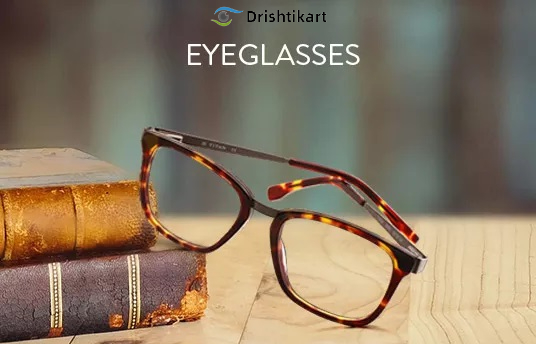 12 Aug 2021 | Marketing | Author: Drishtikart India | 9081 views
12 Aug 2021 | Marketing | Author: Drishtikart India | 9081 views
Best brand for prescription glasses
When buying new prescription glasses, you are going to want a pair with the thinnest lenses possible. If you have a medium or strong prescription, your lenses will need to accommodate your prescription requirements. But don’t let the technical information puzzle you – we’ll explain how you can easily get the thinnest lenses for your frames!
What Affects Lens Thickness?
When buying glasses, there are three primary factors that affect your overall lens thickness:
- Prescription. This will ultimately determine how thick your lenses will be. Simply put, the higher the prescription, the thicker the lens. In addition, prescriptions with moderate to high astigmatism correction often result in thicker lenses.
- Lens Material or Lens Index. The lens index refers to the “index of refraction,” or how much the lens bends the light that enters it. This ensures that the light is focused properly onto the retina, helping you to see clearly when wearing your glasses. In general, the higher the index, the thinner the lens. (For example, a 1.61 lens is thinner than a 1.50 lens.)During the checkout process at Drishtikart, choosing a higher lens index will be the most direct way to ensure you have the thinnest lenses possible. Note: the lens index that is recommended for your prescription during checkout will be the most appropriate lens choice. Learn more by checking out our lens material guide.
- Lens Size. The overall width and height of your lenses can have a considerable impact on the thickness and weight of the lenses themselves. The bigger the lens, the thicker and heavier it will be. When buying frames at Drishtikart, filter for frames with smaller lens width and height. Aside from choosing frames based on factors like style and face shape, you should also shop based on size, as well as your eye doctor’s recommendations.
Lens Index Options
Now that you understand how your lens thickness is determined, let’s check out the lens index options at Drishtikart from thickest to thinnest.
1.50 Standard Index
This is our most basic lens type. It’s ideal for low prescriptions in the range of +1.00/-2.75 or below. If you have an extremely mild prescription, the standard index option will deliver the thinnest frame.
Keep in mind that that this lens index only features 85%-90% UV protection in a clear lens. For 100% UV protection, you’ll want to select a higher lens index or a more advanced lens option such as our blue light blocking lenses.
1.57 Mid-Index
If you have a medium-level prescription, a 1.57 mid-index lens will work with this lens index. At Drishtikart, this mid-index free lens option is best for prescriptions +2.00/-3.75 or below. It also features 100% UV protection.
Impact Resistant Lenses
Impact-resistant lenses are recommended for children’s glasses, safety glasses, and sports goggles, as well as rimless and half-rim glasses.
Trivex 1.53
This lens is ideal for prescriptions +2.00/-3.00 or below and delivers excellent impact resistance. Trivex is known for being crisp and clear, more scratch resistant, and 10% lighter than polycarbonate lenses. Our Trivex lenses are perfect for protecting young eyes from harmful blue light from digital screens while also providing durable impact resistance.
Polycarbonate 1.59
Polycarbonate 1.59 lenses also feature great impact resistance and work best if your prescription is +3.00/-4.75 or above. Polycarbonate lenses are more affordable than Trivex, and are only moderately heavier. However, the clarity in polycarbonate lenses is slightly less than Trivex, and they tend to scratch more easily. In terms of thinness, this lens index is thinner than 1.50 lenses.
High Index
When you have a medium or strong prescription, you need a high-index lens to keep your lenses thin. High-index lenses have good optical clarity, 100% UV protection, and excellent durability. They currently come in indices of 1.61, 1.67, and 1.74. All three lenses are made with similar materials, so the choice of index comes down to your prescription strength.
- A 1.61 high-index lens is best for +5.00/-7.00 or above. It can even be a good choice for people with low prescriptions who want the additional lens benefits mentioned above.
- If you have a prescription that is +4.75/-6.75 or below, you’ll benefit from the thinness of a 1.67 high index lens.
- Strong prescriptions that are +5.00/-7.00 or above will work best with a 1.74. When you have a really strong prescription, a 1.74 high-index lens will the thinnest option.
If this seems like a lot of information, don’t worry! When you check out, we automatically recommend the most appropriate lens index.
Start shopping today for your new favorite pair of shades or glasses.






